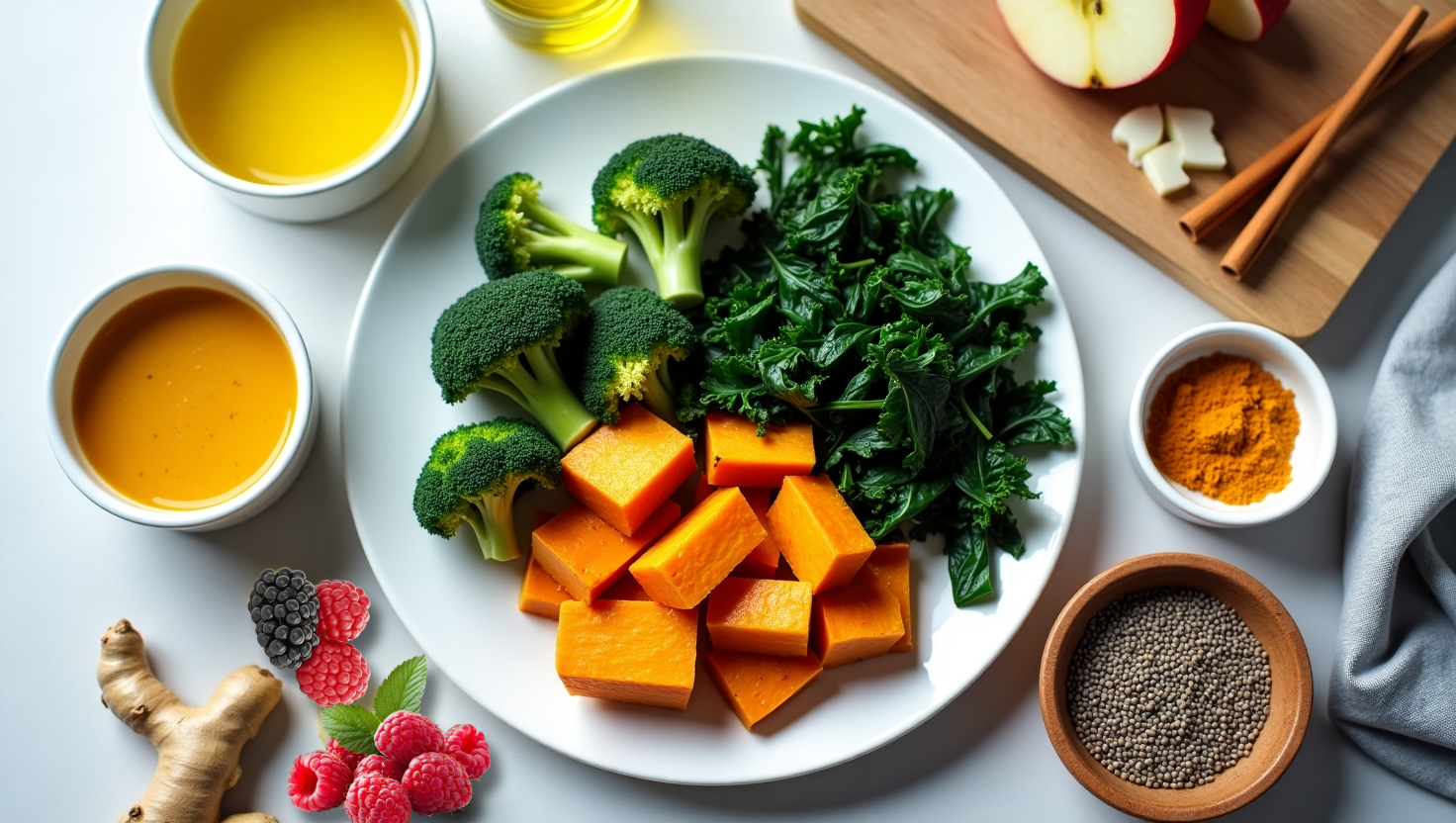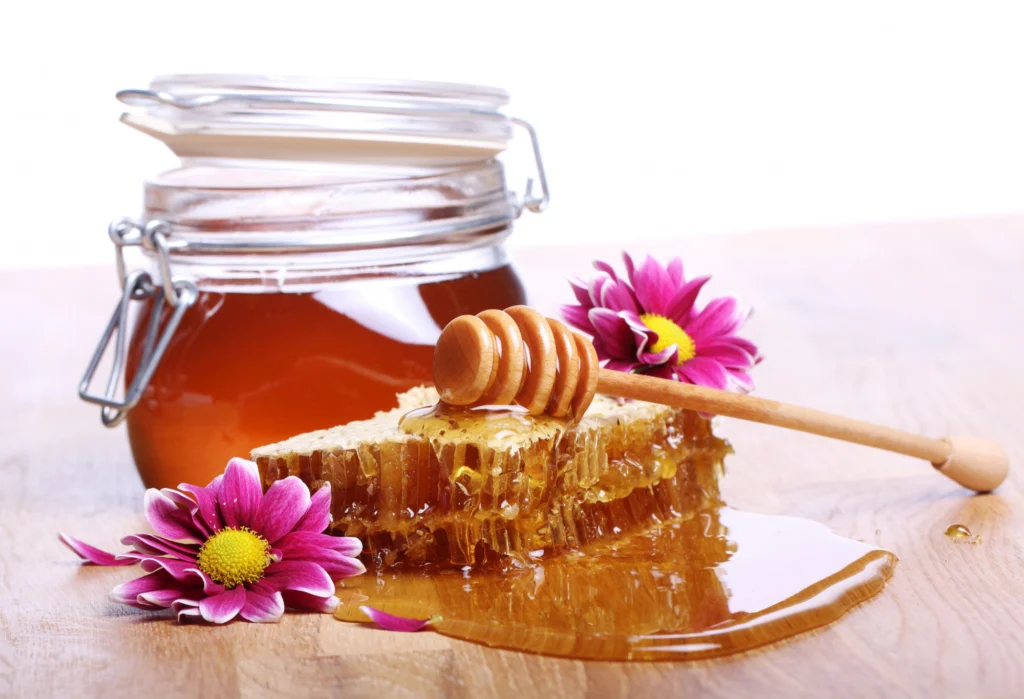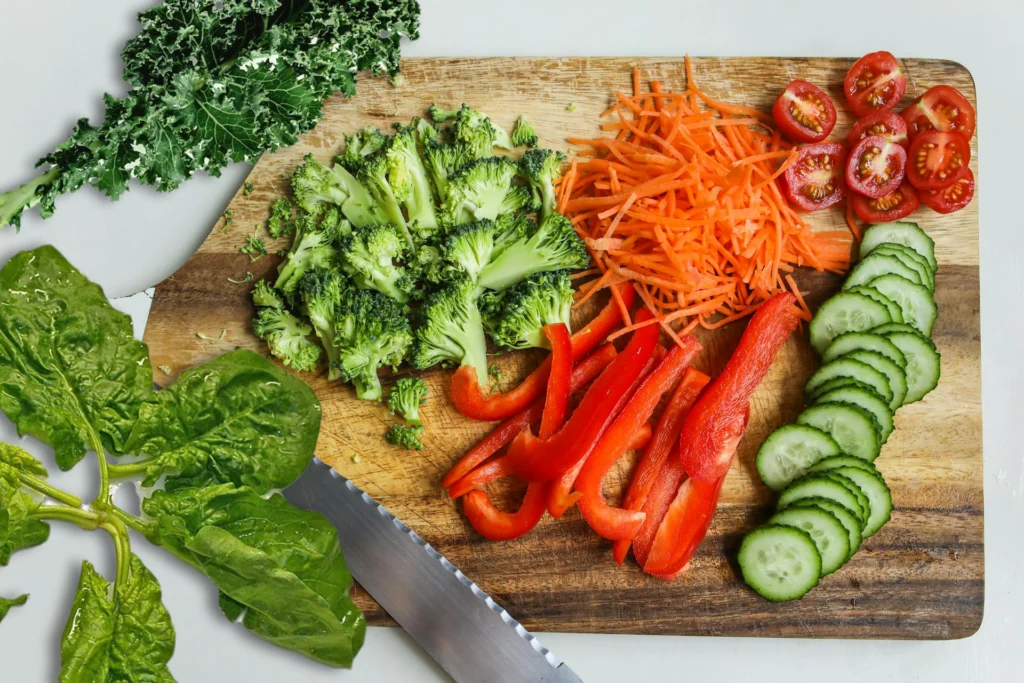What Is Chronic Inflammation? Let’s Break It Down
You wake up with stiff joints. Your energy crashes by noon. You’ve tried everything, but the fatigue won’t lift. What’s going on? The answer might be chronic inflammation—a silent, slow-burning fire inside your body. This is where an anti-inflammatory diet can make a difference—helping to calm inflammation and restore balance.
Unlike acute inflammation (like redness after a cut), chronic inflammation doesn’t heal. Instead, it smolders for months or years, damaging tissues, organs, and cells. Think of it as a broken alarm system: Your body keeps fighting even when there’s no real threat.
Doctors measure this with a blood test for C-reactive protein (CRP)—a marker made by your liver when inflammation strikes.
Here’s the deal:
- Normal CRP: Below 0.3 mg/dL (healthy adults).
- Mild CRP (0.3–1.0 mg/dL): Linked to poor sleep, stress, or early gum disease.
- High CRP (1.0–10.0 mg/dL): Common in diabetes, fatty liver, or arthritis.
- Very High CRP (Over 10.0 mg/dL): Usually means infections like bronchitis.
Why should you care?
If you have diabetes, high blood sugar damages cells, keeping CRP levels up. Fatty liver? Fat buildup in your liver stresses it, making CRP worse. Arthritis? Swollen joints pump out inflammatory chemicals.
The good news: You can lower CRP naturally. Studies show:
- Anti-inflammatory diet includes foods like leafy greens, berries, and olive oil calm inflammation.
- Spices like turmeric block pain-causing enzymes (try adding it to soups!).
- Daily walks reduce stress hormones that spike CRP.
Pro tip: Ask your doctor for a CRP test if you have fatigue, brain fog, or joint pain. Small diet swaps—like swapping soda for green tea—can douse the fire over time.
How Food Can Calm the Fire Inside You
Food isn’t just fuel. It’s a language your body understands. Processed snacks and sugary drinks send chaotic signals, sparking inflammation. Whole foods, however, act like peacekeepers.
An anti-inflammatory diet isn’t about strict rules or giving up everything you love. It’s about better choices—one meal at a time. The right foods can lower swelling, ease joint pain, and boost energy. The more whole foods you eat, the less your body has to fight inflammation. It’s that simple.
The Gut-Immunity Connection
Your gut houses 70% of your immune system. When you eat fiber-rich foods (like oats, lentils, or apples), good bacteria thrive. These microbes produce short-chain fatty acids (SCFAs), which:
- Strengthen the gut lining.
- Lower inflammation.
- Block harmful bacteria.
A large-scale study on dietary fiber and fitness involving 16,934 adults reveals how fiber-rich foods and simple strength exercises work together to lower inflammation. Here’s what you need to know:
- The Gut’s Role: Fiber feeds good gut bacteria, which produce compounds that lower inflammation markers like hs-CRP. Think of it as your gut’s “cleanup crew” for chronic inflammation.
- The Fitness Factor: Women who ate the most fiber and had strong grip strength (like lifting grocery bags) slashed their risk of high hs-CRP by 60%. Men and women doing strength training 3x/week plus high fiber cut their risk by 47-60%.
Why this matters for your health:
- High hs-CRP is linked to diabetes flare-ups, fatty liver progression, and joint pain.
- Fiber isn’t just about regularity. It’s your gut’s fuel to build a stronger immune defense.
Try this tonight:
- Gut-Friendly Meal: Stir lentils (15g fiber/cup) into soups or salads. Add organic spinach for extra magnesium.
- Quick Exercise: Do 10 chair squats while waiting for your tea to brew.
Pro tip: Don’t overcomplicate “strength training.” Carrying kids, gardening, or yoga count too. Consistency beats intensity.
Blood Sugar Spikes Are Silent Killers
High blood sugar isn’t just about energy crashes—it’s a hidden trigger for inflammation. When blood sugar spikes, your body releases inflammatory chemicals like TNF-α and IL-6, which damage cells and worsen conditions like diabetes or fatty liver. Think of it as pouring gasoline on a fire.
Here’s the science — as highlighted in a clinical review on insulin’s anti-inflammatory role:
- Hyperglycemia (high blood sugar) activates oxidative stress, sparking a chain reaction that fuels inflammation.
- Insulin, your body’s natural blood sugar regulator, does double duty: It lowers glucose and directly fights inflammation by blocking harmful proteins like NFκB.
Key study findings:
- Heart attack patients given insulin saw 40% lower CRP levels (a key inflammation marker) compared to those without insulin therapy.
- Insulin reduces TNF-α (a major inflammation driver) by up to 50% in critical illnesses like sepsis or organ damage.
Why this matters for you:
- Uncontrolled blood sugar keeps inflammation simmering, speeding up diabetes complications and joint damage.
- Consistent blood sugar control isn’t just about glucose—it’s about cooling the inflammatory fire.
Try this:
- If you’re diabetic, work with your doctor to avoid extreme blood sugar swings. Even small improvements in glucose levels reduce inflammation.
- Pair carb-heavy meals with protein (e.g., brown rice + grilled chicken) to blunt sugar spikes.
Pro tip: Insulin isn’t just for diabetics. If you’re prediabetic, ask your doctor about insulin sensitivity tests to catch inflammation risks early.
Best Foods for an Anti-Inflammatory Diet You Need Right Now
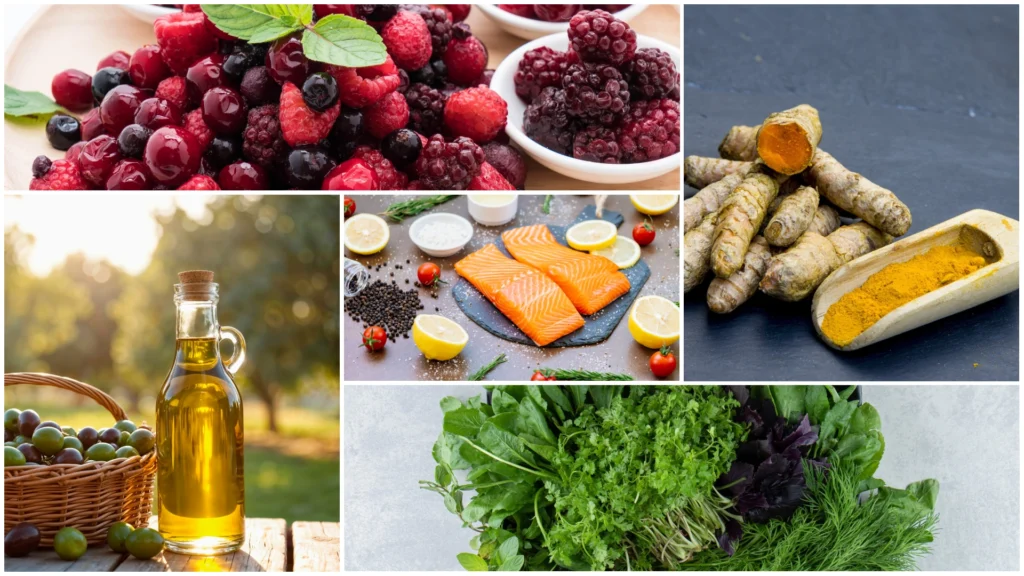
Skip the buzzwords. Here’s your practical, no-nonsense guide to healing foods.
Veggies That Work Like Medicine
- Broccoli: Steam or roast it. Contains sulforaphane, which blocks enzymes linked to joint pain.
- Spinach: Sauté with garlic. Since spinach is rich in magnesium, this mineral helps lower CRP.
- Sweet Potatoes: Roast with olive oil. Beta-carotene in sweet potatoes fights oxidative stress.
Pro Tip: Frozen veggies are affordable and nutrient-dense. Stock up on frozen broccoli and kale.
Spices Your Ancestors Relied On
- Turmeric: Mix ½ tsp with black pepper in soups. Curcumin — the main bioactive compound in turmeric — has been shown to reduce osteoarthritis pain and inflammation.
- Ginger: It’s not just flavor. Grate a bit into your turmeric ginger anti-inflammatory tea — a traditional blend that’s been calming sore joints long before supplements showed up. And the science? Real. A clinical study on ginger extract and post-workout soreness found that even short-term use can ease muscle pain and reduce inflammation markers.
- Cinnamon: Sprinkle on oatmeal. Slows sugar spikes.
And if you haven’t tried it yet, moringa’s anti-inflammatory properties make it a powerful, often overlooked ally in natural healing — it’s packed with nutrients and centuries of medicinal use behind it.
Proteins and Fats That Heal
- Salmon: Canned or fresh. Omega-3s lower inflammatory cytokines.
Salmon isn’t the only star — there’s a wide range of essential fatty acids that calm inflammation and support heart, brain, and joint health naturally. - Walnuts: Eat a handful daily. Linked to better brain health.
- Olive Oil: Drizzle on salads. Oleocanthal — a natural compound in extra virgin olive oil — has anti-inflammatory benefits comparable to ibuprofen, targeting the same enzymes involved in pain and swelling.
Your 30-Day Meal Plan (No Fuss, No Stress)
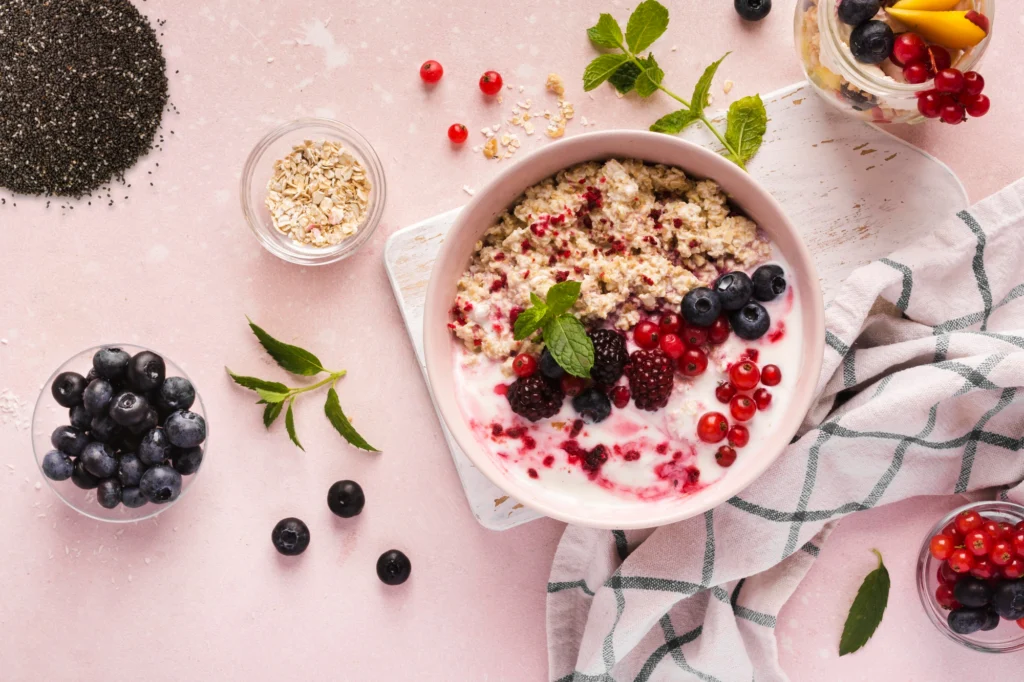
This isn’t a diet. It’s a sustainable reset for real life.
Week 1 – Detox Without Deprivation
Breakfast:
- Oatmeal with frozen berries, chia seeds, and almond butter.
Or blend your way into healing with this fiber-rich berry smoothie bowl — packed with antioxidants to ease inflammation and energize your morning. - Why: Fiber + antioxidants reduce gut inflammation.
Lunch:
Canned salmon (wild-caught) on mixed greens. Add quinoa, olive oil, and lemon.
Dinner:
Lentil soup with kale and turmeric. Use canned lentils to save time.
Snack:
Carrot sticks with hummus.
Grocery List:
Canned salmon, lentils, frozen berries, oats.
Weeks 2-4 – Simple, Sustainable Meals
- Batch Cook Sundays: Roast sweet potatoes, Brussels sprouts, and chicken. Use leftovers in salads or wraps.
- Affordable Swaps: Frozen spinach instead of fresh. Canned beans instead of dried.
Recipes for Specific Health Struggles
Diabetes-Friendly Snacks
Chia Pudding:
- Mix 3 tbsp chia seeds + 1 cup unsweetened almond milk + ½ tsp vanilla.
- Refrigerate overnight. Top with raspberries.
- Why: Balances blood sugar with fiber and healthy fats.
No-Cook Energy Bites:
- Blend oats, peanut butter, dark chocolate (70%+), and flaxseeds.
- Roll into balls. Store in the fridge.
Kidney-Safe Meals
Butternut Squash Soup:
- Sauté onion, garlic, and squash. Add low-sodium broth. Blend until smooth.
- Avoid: Tomatoes, spinach, and processed cheeses (high in potassium).
Herb-Roasted Chicken:
- Rub chicken breasts with olive oil, rosemary, and thyme. Bake at 375°F for 25 minutes.
Lifestyle Tweaks That Actually Matter
Diet alone isn’t enough. Pair it with these habits:
Move More, Stress Less
- Daily Walks: 20 minutes outdoors lowers cortisol (the stress hormone).
- Breathing Exercises: 5 minutes of deep breathing calms your nervous system.
A 2009 clinical study on depression and inflammation found that lowering depressive symptoms significantly reduced key inflammatory markers.
Sleep Like Your Health Depends on It
Bad sleep makes inflammation worse. Inflammation makes sleep worse. It’s a vicious cycle. An anti-inflammatory diet can help break it. Foods rich in magnesium—like nuts, seeds, and leafy greens—help relax muscles and support deep sleep.
Better sleep means less stress. Less stress means less inflammation. One small change leads to another.
Poor sleep raises IL-6, a key inflammatory marker. Tips:
- Turn off screens by 10 PM.
- Keep your room cool (65°F is ideal).
FAQs
Q: Can I drink coffee?
A: Yes. Black coffee has antioxidants. Avoid sugary creamers.
Q: How fast will I see changes?
A: Most notice better energy in 2 weeks. Joint pain improves in 6-8 weeks.
Q: Is organic necessary?
A: Prioritize organic for strawberries, spinach, and apples. Wash others thoroughly.
Ready to Start? Do This Today
- Toss vegetable oil. Buy olive oil.
- Replace sugary cereal with oats.
Small swaps can create big shifts in your energy, mood, and long-term health. Start with these two today, and you’ll already be moving toward lower inflammation and better well-being. For more clean, nutrient-rich upgrades, explore our list of the most powerful immune-boosting foods and start building your pantry for success.

